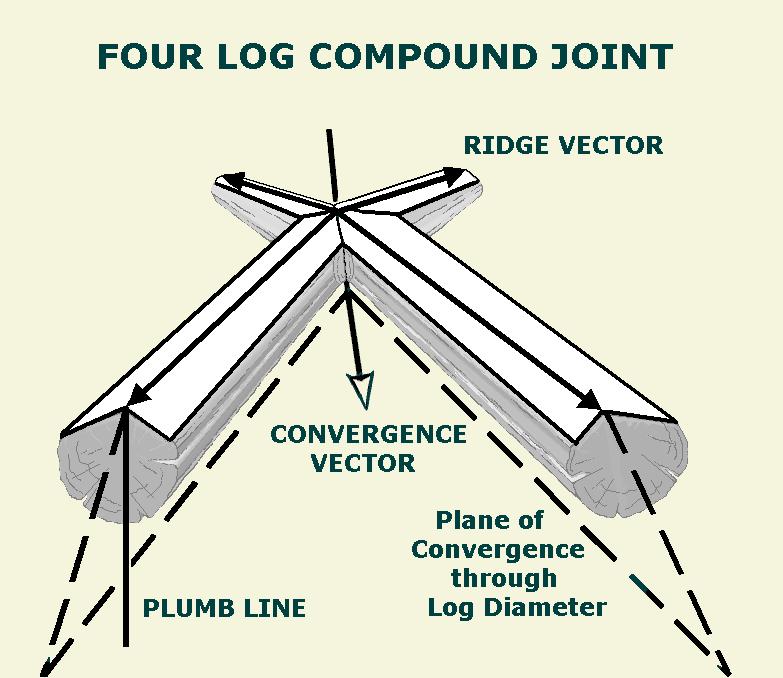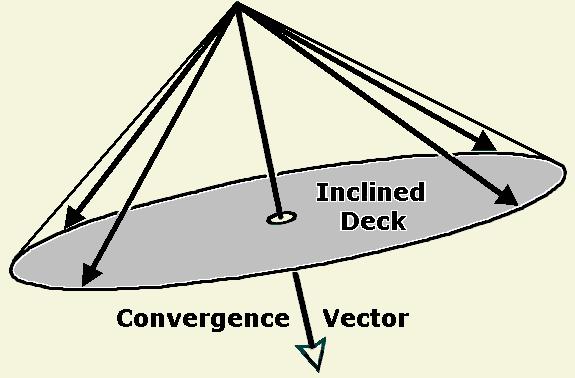|
Conic Model of a Compound Joint The terms used in the following diagrams are the same as in Alternate Convergent Joint Solution All log diameters are equal; the planes of convergence pass through the diameters and intercept at the convergence vector. 
The geometry of the compound joint is that of a right circular cone.
Equal ridge vectors, all at equal angles with respect to
the convergence vector, lie on the nappe of the cone;
the convergence vector is perpendicular to the inclined deck and lies on the altitude.
The inclined deck is on the circular base.

When three logs meet, the projection of the true deck to the inclined deck remains a triangle. Since a triangle can always be circumscribed, it follows that a joint comprised of three members may always be compound joined. An example of such a joint may be viewed in the PHOTO GALLERY 1 . HOME PAGE |